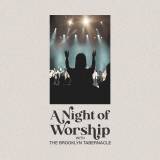MUST KNOW MUSICAL AND SINGING TERMS
A Cappella: Singing without any form of instrumental accompaniment.Accent: Giving
a particular note or phrase more stress than the ones before or after
it. Italics do it in print, accents do it in singing. To be effective in
solo singing, accents must usually be subtle.
Accompaniment: The instrumentation that plays beneath the singing.
Accompanist: A pianist who plays music beneath the singing.
Alto: See this page.Aria: In opera, a song, especially a solo.Art Song: In classical music, a song not from an opera, but sung in classical style. Art songs were created primarily for concerts.Attack: Describes the process of a singer first hitting a note, as in "his attack on that high C was too harsh," or "her attack at the beginning of the song was very gentle."Back phrasing: A stylistic technique where the singer is either ahead or behind the beat, on purpose. Jazz singers typically use this technique, as do some pop singers. (Beware, however, most musicians do not understand back phrasing, and you'll make them crazy with it! My advice is to tell them to keep the beat instead of following you.)Baritone: See this page.Bass: See this page.Bel Canto: Singing that focuses on beautiful sound, not on acting or emotion. It's characterized by ornate vocal style.
Belting: Originally a term applied to female voices only: "This is a loud, driving sound that is produced by pushing the natural chest register beyond its normal limits. Most 'belters' can carry it fairly comfortably up to around B flat in the middle of the staff..." (Oscar Kosarin, The Singing Actor) Although the original terminology didn't include men, male singers can also belt. Blend: In solo singing, the smooth transition between the head and chest voice. Or, when more than one individual is singing, the sound combination between singers, which preferably makes it difficult to pick out one singer's voice amid the group.
Break: The sudden change in tone between the head and chest voice, caused by vocal tension. When a singer hits his or her break, there may be a "popping" sound, or some other sound that is jarring and ugly. This can be avoided with good vocal technique.
Breath Support: Efficient use of the singer's stream of breath, controlled primarily by the diaphragm.
Catch Breath: A quick, short, unobtrusive breath.
Contralto: See this page.
Countertenor: In layman's terms, an "Irish Tenor." A male who sings in his falsetto, the highest of the male voices.
Covering: A term used mostly in opera to describe a darker tone.Chest Voice: Or "chest register." The lower notes of a singer's range; in the same general range as the speaking voice. When singing in the chest voice, the vocal cords become naturally thick, and the resulting sound is generally associated with deep, warm tones.
Diaphragm: "The dome shaped muscle attached to the bottom of the lungs that separates your chest and stomach cavities. Its main function is to initiate inhalation." (Wake Forest University Baptist Medical Center, Center For Voice Disorders, A Reader's Glossary of Common Terms Related to Laryngology and the Voice)
Accompaniment: The instrumentation that plays beneath the singing.
Accompanist: A pianist who plays music beneath the singing.
Alto: See this page.Aria: In opera, a song, especially a solo.Art Song: In classical music, a song not from an opera, but sung in classical style. Art songs were created primarily for concerts.Attack: Describes the process of a singer first hitting a note, as in "his attack on that high C was too harsh," or "her attack at the beginning of the song was very gentle."Back phrasing: A stylistic technique where the singer is either ahead or behind the beat, on purpose. Jazz singers typically use this technique, as do some pop singers. (Beware, however, most musicians do not understand back phrasing, and you'll make them crazy with it! My advice is to tell them to keep the beat instead of following you.)Baritone: See this page.Bass: See this page.Bel Canto: Singing that focuses on beautiful sound, not on acting or emotion. It's characterized by ornate vocal style.
Belting: Originally a term applied to female voices only: "This is a loud, driving sound that is produced by pushing the natural chest register beyond its normal limits. Most 'belters' can carry it fairly comfortably up to around B flat in the middle of the staff..." (Oscar Kosarin, The Singing Actor) Although the original terminology didn't include men, male singers can also belt. Blend: In solo singing, the smooth transition between the head and chest voice. Or, when more than one individual is singing, the sound combination between singers, which preferably makes it difficult to pick out one singer's voice amid the group.
Break: The sudden change in tone between the head and chest voice, caused by vocal tension. When a singer hits his or her break, there may be a "popping" sound, or some other sound that is jarring and ugly. This can be avoided with good vocal technique.
Breath Support: Efficient use of the singer's stream of breath, controlled primarily by the diaphragm.
Catch Breath: A quick, short, unobtrusive breath.
Contralto: See this page.
Countertenor: In layman's terms, an "Irish Tenor." A male who sings in his falsetto, the highest of the male voices.
Covering: A term used mostly in opera to describe a darker tone.Chest Voice: Or "chest register." The lower notes of a singer's range; in the same general range as the speaking voice. When singing in the chest voice, the vocal cords become naturally thick, and the resulting sound is generally associated with deep, warm tones.
Diaphragm: "The dome shaped muscle attached to the bottom of the lungs that separates your chest and stomach cavities. Its main function is to initiate inhalation." (Wake Forest University Baptist Medical Center, Center For Voice Disorders, A Reader's Glossary of Common Terms Related to Laryngology and the Voice)
Diction: The
clear pronunciation of words. This requires attention to both
consonants and vowels. Different types of music may require more or less
diction; for example, in musical theatre, it's essential that the
audience understand the lyrics, but in jazz or blues, the singer may
occasionally slur words on purpose in order to achieve a desired sound.
Good diction helps produce good sound, however, so all singers should
pay attention to it.
Dramatic: As in a "dramatic soprano," "dramatic tenor," etc. A type of singing that is heavier than "lyric," often accompanied by more focus on acting than on making a "pretty" sound.
Dynamics: The variations of soft and loud singing in a given song.Falsetto: In male singers, a high register (actually, sung in the female range) similar to the head voice. However, unlike the head voice, falsetto cannot blend with the chest voice. This type of singing characterizes the stereotypical "Irish tenor" or countertenor sound, with light, often breathy notes. All men also have a head voice.Forced: Singing that is forced may sound strained, and is accompanied by unnecessary tension in the throat.Head Voice: Or "head register." Singing in the higher part of the range. While singing in the head voice, the vocal folds are thin; the head voice is usually associated with light, bright sounds.Imagery: The situations, people, or emotions a singer pictures in his or her head while they sing, in order to achieve emotion and a good level of acting in their songs. Imagery may also be used to help a singer achieve better vocal technique.
Intonation: Refers to pitch. If he or she has "bad intonation," they sing either flat or sharp.Irish Tenor: A layman's term for a countertenor.Lead Sheet: A type of sheet music that contains only the lyrics, the melody line, and chords. No piano accompaniment is written out.
Legato: Singing as though all the notes were tied together; the notes flow together smoothly.Legit Voice (legitimate voice): Singing in a classical style, generally in the head voice. The term "legitimate" probably comes from the days when there was "legitimate theatre" (i.e. opera and "serious" drama) and, on the opposite spectrum, "vaudeville," which would have used more chest singing.Lyric: As in "lyric soprano," "lyric baritone," etc. A type of singing that is lighter in style and sound than a "dramatic."
MORE ON PAGE 2.....
Dramatic: As in a "dramatic soprano," "dramatic tenor," etc. A type of singing that is heavier than "lyric," often accompanied by more focus on acting than on making a "pretty" sound.
Dynamics: The variations of soft and loud singing in a given song.Falsetto: In male singers, a high register (actually, sung in the female range) similar to the head voice. However, unlike the head voice, falsetto cannot blend with the chest voice. This type of singing characterizes the stereotypical "Irish tenor" or countertenor sound, with light, often breathy notes. All men also have a head voice.Forced: Singing that is forced may sound strained, and is accompanied by unnecessary tension in the throat.Head Voice: Or "head register." Singing in the higher part of the range. While singing in the head voice, the vocal folds are thin; the head voice is usually associated with light, bright sounds.Imagery: The situations, people, or emotions a singer pictures in his or her head while they sing, in order to achieve emotion and a good level of acting in their songs. Imagery may also be used to help a singer achieve better vocal technique.
Intonation: Refers to pitch. If he or she has "bad intonation," they sing either flat or sharp.Irish Tenor: A layman's term for a countertenor.Lead Sheet: A type of sheet music that contains only the lyrics, the melody line, and chords. No piano accompaniment is written out.
Legato: Singing as though all the notes were tied together; the notes flow together smoothly.Legit Voice (legitimate voice): Singing in a classical style, generally in the head voice. The term "legitimate" probably comes from the days when there was "legitimate theatre" (i.e. opera and "serious" drama) and, on the opposite spectrum, "vaudeville," which would have used more chest singing.Lyric: As in "lyric soprano," "lyric baritone," etc. A type of singing that is lighter in style and sound than a "dramatic."
MORE ON PAGE 2.....
MUST KNOW MUSICAL AND SINGING TERMS
![MUST KNOW MUSICAL AND SINGING TERMS]() Reviewed by Admin
on
1:38:00 PM
Rating:
Reviewed by Admin
on
1:38:00 PM
Rating:
















Post a Comment